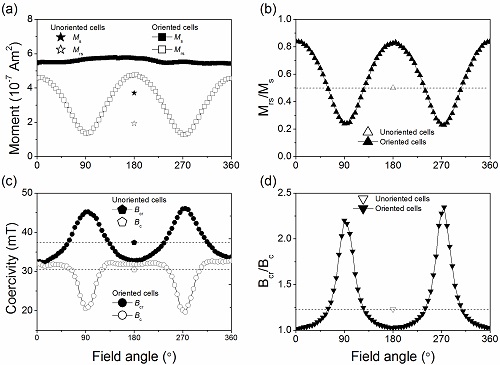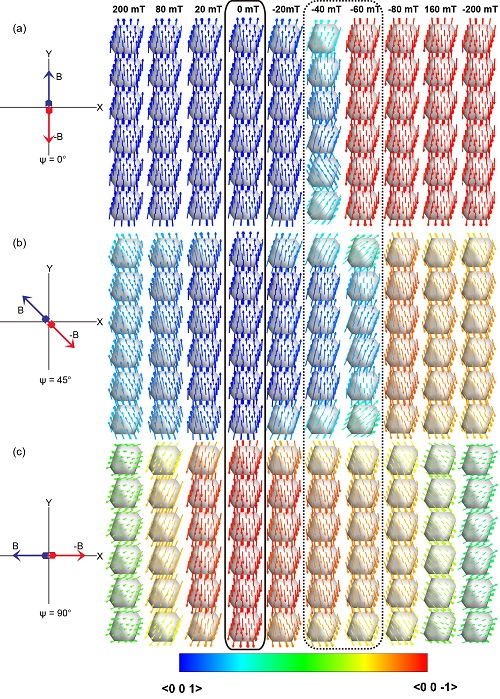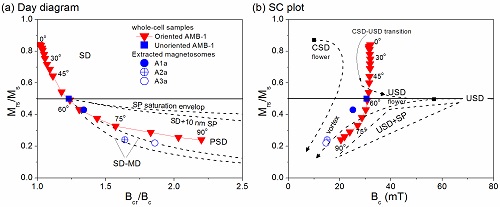Vice Professor LI Jinhua and his team investigate angular variation of magnetic properties of aligned Magnetospirillum magneticum AMB-1 cells, each of which contains one single fragmental chain of magnetosomes. With measurements at increasing angles from the chain direction, we observed that (i) the hysteresis loop gradually changes from nearly rectangular to a ramp-like shape (e.g., Bc and remanence decrease), (ii) the acquisition and demagnetization curves of IRM shift toward higher fields (e.g.,Bcr increases), and (iii) the FORC diagram shifts toward higher coercivity fields (e.g., Bc,FORC increases). For low-temperature results, compared to unoriented samples, the samples containing aligned chains have a much lower remanence loss of field-cooled (δFC) and zero-field-cooled (δZFC) remanence upon warming through the Verwey transition, higher δ-ratio (δ = δFC/δZFC) for the measurement parallel to the chain direction, and lower δ-ratio, larger δFC and δZFC values for the perpendicular measurement.
Micromagnetic simulations confirm the experimental observations and reveal that the magnetization reversal of magnetosome chain appears to be noncoherent at low angles and coherent at high angles. The simulations also demonstrate that the angular dependence of magnetic properties is related to the dispersion degree of individual chains, indicating that effects of anisotropy need to be accounted for when using rock magnetism to identify magnetosomes or magnetofossils once they have been preserved in aligned chains. Additionally, this study experimentally demonstrates an empirical correspondence of the parameter Bc,FORC to Bcr rather than Bc, at least for magnetite chains with strong shape anisotropy. This suggests FORC analysis is a good discriminant of magnetofossils in sediments and rocks.

Figure 1. (a–c) SEM images of oriented AMB-1 cells and their intracellular magnetosome chains. (d) Histogram of dispersion angles of individual magnetosome chains. (Image by LI)

Figure 2. Angular variations of hysteresis parameters for oriented sample of AMB-1 cells. (Image by LI)

Figure 3. Micromagnetic modeling results for single magnetosome subchain at different magnetic field angles (ψ, row) and intensities (B, column). (Image by LI)

Figure 4. Day diagram (Mrs/Ms versus Bcr/Bc) and Squareness-coercivity (SC) plot (Mrs/Msversus Bc) for samples of oriented AMB-1 cells (red inversed triangles), unoriented AMB-1 cells (blue sold square), and extracted magnetosomes from AMB-1 cells (blue circles). (Image by LI)
Li et al. A very strong angular dependence of magnetic properties of magnetosome chains: Implications for rock magnetism and paleomagnetism. Geochemistry Geophysics Geosystems, 2013, 14(10): 3887-3907, doi: 10.1002/ggge.20228 (Link)